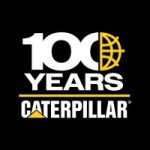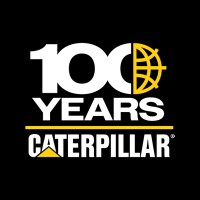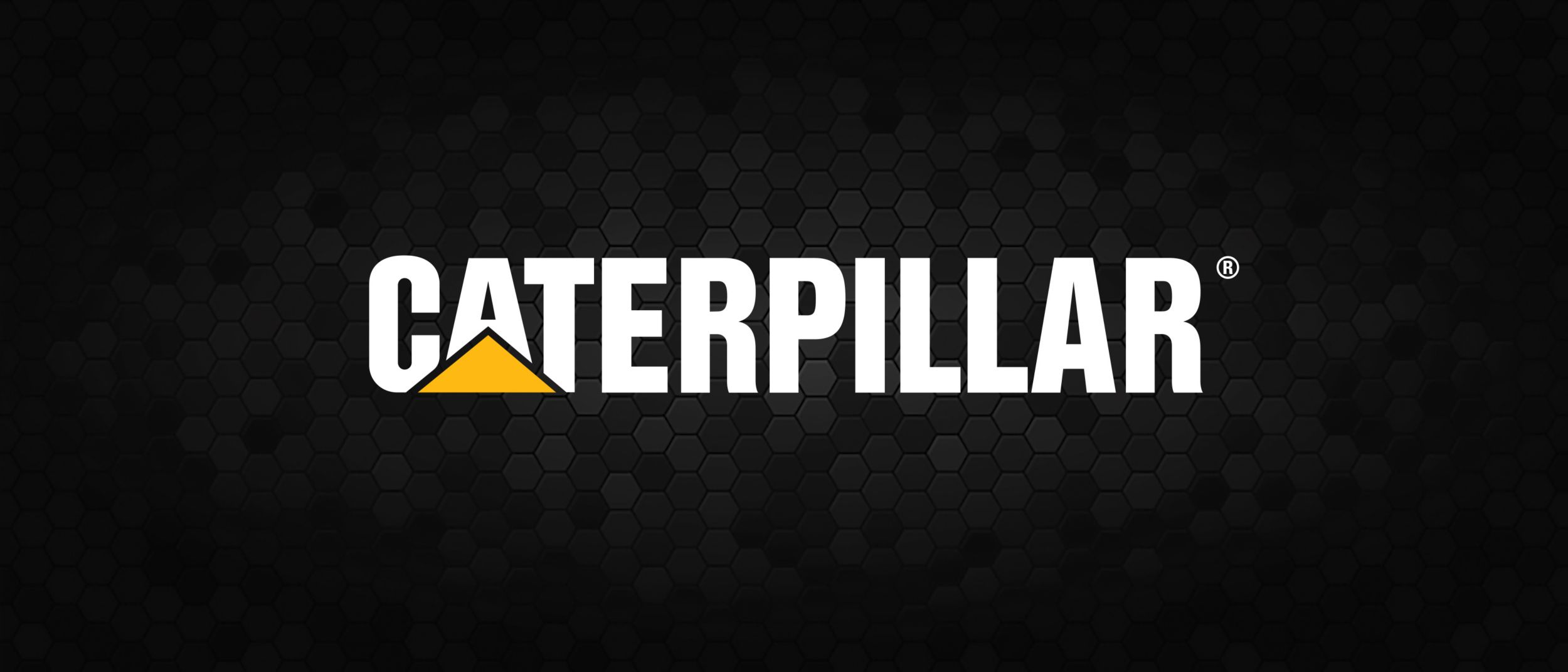
Website Caterpillar Inc.
Manufacturing Engineer
🛠️ The Role: Manufacturing Engineer at Caterpillar
Caterpillar is Hiring Manufacturing Engineer to join the team. This position is important for production success. The Manufacturing Engineer assists with technical analysis. This analysis covers all manufacturing processes. The role is broad. It includes cost analysis. It covers quality checks. It includes safety compliance. Environmental requirements are also part of the job.
Manufacturing Engineer Role Definition
The Manufacturing Engineer assists with technical analysis. This analysis focuses on manufacturing processes. The processes include all aspects of production. The analysis covers production costs. It reviews product quality. It ensures compliance to safety guidelines. It checks environmental requirements for manufacturing. The Caterpillar Manufacturing Engineer helps keep operations running smoothly.
Key Manufacturing Engineer Responsibilities
The Caterpillar Manufacturing Engineer has several key duties. These duties are crucial for the production floor.
- Participating in identifying and implementing enhancements and modifications to equipment and processes. The Manufacturing Engineer looks for better ways to do things. Improvements make production faster. Modifications make it safer.
- Monitoring equipment and process reliability; identifying and addressing problem areas. The Manufacturing Engineer watches the machines. They ensure machines work correctly. They fix problems when they arise. This monitoring prevents major shutdowns.
- Providing coaching and development for operations technical staff and support areas. The Manufacturing Engineer shares knowledge. They train staff on new methods. They help technicians improve their skills.
- Providing engineering support on planning, development, operation, and maintenance of equipment, processes, or facilities. The Manufacturing Engineer offers technical help. This support is necessary for projects. It is needed for daily upkeep.
Caterpillar is Hiring Manufacturing Engineer individuals who can handle these varied tasks.
🎓 Manufacturing Engineer Degree Requirement
A degree or equivalent experience is desired for the Caterpillar Manufacturing Engineer role. A degree provides the foundation. Experience shows practical ability. Many successful engineers have engineering degrees. Mechanical engineering is relevant. Industrial engineering is relevant. Manufacturing engineering is relevant. Equivalent experience means years of practical work. The experience must show similar skills. Caterpillar is Hiring Manufacturing Engineer candidates with strong backgrounds.
💡 Essential Skills for the Caterpillar Manufacturing Engineer
The Caterpillar Manufacturing Engineer needs specific skills. These skills ensure job success. The company evaluates candidates based on these skills.
Decision Making and Critical Thinking
Knowledge of the decision-making process is needed. Tools and techniques for this process are necessary. The Manufacturing Engineer must analyze situations accurately. The engineer must reach productive decisions. Informed judgment guides the decision.
Level Working Knowledge:
- Applies an assigned technique for critical thinking in a decision-making process. The Manufacturing Engineer uses defined methods. These methods help analyze choices.
- Identifies, obtains, and organizes relevant data and ideas. Data collection is a key task. Organizing data makes it useful.
- Participates in documenting data, ideas, players, stakeholders, and processes. Documentation is essential. It provides a record of decisions.
- Recognizes, clarifies, and prioritizes concerns. The Manufacturing Engineer sees problems. The engineer defines the problem clearly. Priorities guide action.
- Assists in assessing risks, benefits and consideration of alternatives. Every choice has a risk. Every choice has a benefit. Alternatives must be evaluated. The Caterpillar Manufacturing Engineer helps with this.
Judgment and Decision Making
Knowledge of the decision-making process is required. The Manufacturing Engineer must evaluate the impact of situations. The engineer must choose the best path. Communicating actions is important. Actions must maximize organizational performance.
Level Basic Understanding:
- Identifies a defensible course of action from among alternatives. The chosen action must be justified. It must be a good choice.
- Demonstrates the ability to follow directions. Following instructions is necessary for safety and quality.
- Applies the concept of discernment to narrow a set of choices or rank-order options. Discernment means judging well. It helps choose the best option.
- Seeks help to confirm or support difficult decisions. Asking for help is smart. It prevents big mistakes. The Caterpillar Manufacturing Engineer knows when to ask.
Lean Manufacturing
Knowledge of lean manufacturing philosophy is important. Principles and implementation approaches are needed. The Manufacturing Engineer must integrate lean principles. This integration happens into production and management processes. Lean aims to reduce waste.
Level Basic Understanding:
- Cites examples of benefits and risks associated with implementing lean principles. The Manufacturing Engineer understands why lean works. The engineer knows potential problems.
- Describes basic tools for observing existing processes and identifying waste. Tools like value stream mapping are important. Waste includes time, material, and movement.
- Cites industry or company examples of successful and unsuccessful lean implementations. Learning from past projects is helpful.
- Identifies key lean principles and highlights of the lean manufacturing process. Principles include continuous improvement and respect for people. The Caterpillar Manufacturing Engineer uses these ideas.
Manufacturing Equipment
Knowledge of manufacturing equipment is essential. This includes electrical, mechanical, and logistics equipment. The Manufacturing Engineer must safely operate equipment. The engineer must maintain, update, and store equipment.
Level Basic Understanding:
- Describes the roles and responsibilities of equipment vendors and own staff. Understanding who does what is key for maintenance.
- Explains where and how to obtain more equipment-specific information. Documentation is important for all machines.
- Lists basic aspects of routine and preventive maintenance. Maintenance prevents breakdowns. Routine checks keep machines running.
- Identifies uses and features of diverse types of manufacturing equipment. Knowing machine capability is crucial for process design. Caterpillar is Hiring Manufacturing Engineer candidates with this knowledge.
Manufacturing Processes
Knowledge of existing product manufacturing methods is needed. Technologies and processes must be understood. The Manufacturing Engineer must execute, plan, manage, and monitor the entire manufacturing process.
Level Working Knowledge:
- Assesses associated phases, activities, deliverables and processes. The Manufacturing Engineer breaks down the whole process.
- Documents relevant standards, policies and practices. Written procedures ensure consistency.
- Follows standard manufacturing processes to conduct production activities. Standard work reduces errors.
- Researches new technologies to be integrated into existing manufacturing process. New technology can improve quality and speed.
- Explains tools, techniques and documents used for process monitoring and control. Statistical Process Control (SPC) is an example.
Manufacturing Safety
Knowledge of manufacturing safety is critical. The Manufacturing Engineer must identify work-related hazards. The engineer must perform activities to meet regulatory requirements. Safety protects workers, the environment, and the site.
Level Working Knowledge:
- Conducts daily maintenance and keeps tracking logs on safety equipment. Fire extinguishers and emergency stops need checks.
- Responds to first aid and accident situations following standard procedures. Quick and correct response is vital.
- Inspects manufacturing working environment to find safety violations within a specific area. Regular checks prevent accidents.
- Utilizes personal protective equipment required or recommended for manufacturing staff. PPE includes hard hats and safety glasses.
- Determines appropriate action to take when unsafe conditions are encountered. Stopping work may be necessary. The Caterpillar Manufacturing Engineer prioritizes safety.
Manufacturing Standards, Procedures and Policies
Knowledge of organizational standards is required. Procedures and policies for manufacturing activities are essential. The Manufacturing Engineer must plan, guide, and monitor processes for compliance.
Level Working Knowledge:
- Contributes to the development and implementation of specific manufacturing procedures. The Manufacturing Engineer writes clear instructions.
- Investigates the need to refer potential exceptions upward for review and approval. Sometimes a process must change. Management review is needed.
- Explains the rationale for procedures and standards in own area of responsibility. People follow rules they understand.
- Participates in the implementation of manufacturing standards and procedures to one’s own function. The Manufacturing Engineer uses the standards.
- Provides feedback for improvement of procedures. Procedures can always get better.
Problem Management Process – MFG
Knowledge of manufacturing problem management processes is necessary. Methodologies and techniques help. The Manufacturing Engineer must use a disciplined approach. This approach brings the problem to a successful resolution.
Level Basic Understanding:
- Describes high-level flow of problem management from inception to completion. The engineer knows the steps to solve a problem.
- Provides examples of clear and unclear problem reports. A good report has facts.
- Identifies types of standard problems addressed in a manufacturing setting. Examples are tool wear or machine alignment issues.
- Locates information regarding fundamental practices, policies and processes. The Caterpillar Manufacturing Engineer knows where to find help.
Get instant updates about premium job alerts: 👉 Click to Join WhatsApp Group
❓ Top 10 Interview Questions for a Caterpillar Manufacturing Engineer
Caterpillar is Hiring Manufacturing Engineer talent. Preparation is key to success. Review these common interview questions. Practice your answers. These questions cover the skills needed for the Manufacturing Engineer role.
Q1: Describe a project where you improved a manufacturing process.
Answer: I worked on a welding line. The cycle time was too long. I used a value stream map. I found a bottleneck in the part fixturing step. I redesigned the fixture to allow faster clamping. This change reduced the cycle time by 15%. This improvement saved the company money. This is an example of applying Lean Manufacturing principles.
Q2: How do you ensure safety compliance in a new process design?
Answer: Safety is the top priority. I review all steps for potential hazards. I consult the Manufacturing Safety standards. I use a Failure Mode and Effects Analysis (FMEA). I ensure all equipment has proper guarding. I choose Personal Protective Equipment (PPE). I train operators on the new safety procedures. I complete all required safety documentation.
Q3: Explain your understanding of Lean Manufacturing and its core principles.
Answer: Lean Manufacturing focuses on eliminating waste. Waste is anything the customer will not pay for. Core principles include continuous improvement, respect for people, and standard work. Tools include 5S and Just-In-Time production. I use lean to make processes better and faster. This approach supports my work as a Caterpillar Manufacturing Engineer.
Q4: Give an example of a difficult decision you made as an engineer.
Answer: We needed to purchase a new piece of equipment. Three vendors offered options. All options had pros and cons. I used a decision matrix. I weighted cost, reliability, and maintenance needs. I chose the mid-range option. It had the best long-term reliability scores. I presented the data to my manager. This used my Judgment and Decision Making skills.
Q5: How do you handle resistance from staff when implementing a change?
Answer: I use clear communication. I explain the why behind the change. I involve the operators early in the process. Their feedback is important. I show them how the change benefits them. For example, a new fixture made the work easier. I provide clear coaching and development. This approach reduces resistance.
Q6: What steps do you take when troubleshooting a major equipment failure?
Answer: First, I ensure the area is safe. Safety is always first. Second, I gather information. I look at equipment logs and operator reports. Third, I use a systematic problem management process. I diagnose the root cause. I avoid just fixing the symptom. I document the findings. Finally, I implement a permanent fix.
Q7: Describe a time you had to research and integrate a new manufacturing technology.
Answer: Our current process for surface finish was slow. I researched new abrasive blasting systems. I found a robotic system. I worked with the vendor. I developed a trial run plan. I assessed the quality and cost impact. I presented a recommendation to management. We integrated the new system. This improved our efficiency.
Q8: How do you monitor process reliability and identify problem areas?
Answer: I use data. I track key metrics like uptime and scrap rate. I create control charts. These charts show variation. If a process point is outside control limits, I investigate. I talk to the operators. I document problem areas. This monitoring is a core Manufacturing Engineer responsibility.
Q9: What role does documentation play in your engineering work?
Answer: Documentation is essential. It ensures consistency. It protects quality. I document all process standards and procedures. I document equipment changes. I keep detailed tracking logs. Good documentation helps new engineers learn quickly. It is critical for compliance and safety.
Q10: How do you apply critical thinking when assessing alternatives for a solution?
Answer: I do not jump to the first solution. I list all viable alternatives. I identify the risks and benefits of each. I use objective data to compare them. I prioritize concerns, such as cost versus long-term performance. I apply a critical thinking technique. This leads to the most productive decision for the company.
To apply for this job please visit cat.wd5.myworkdayjobs.com.


